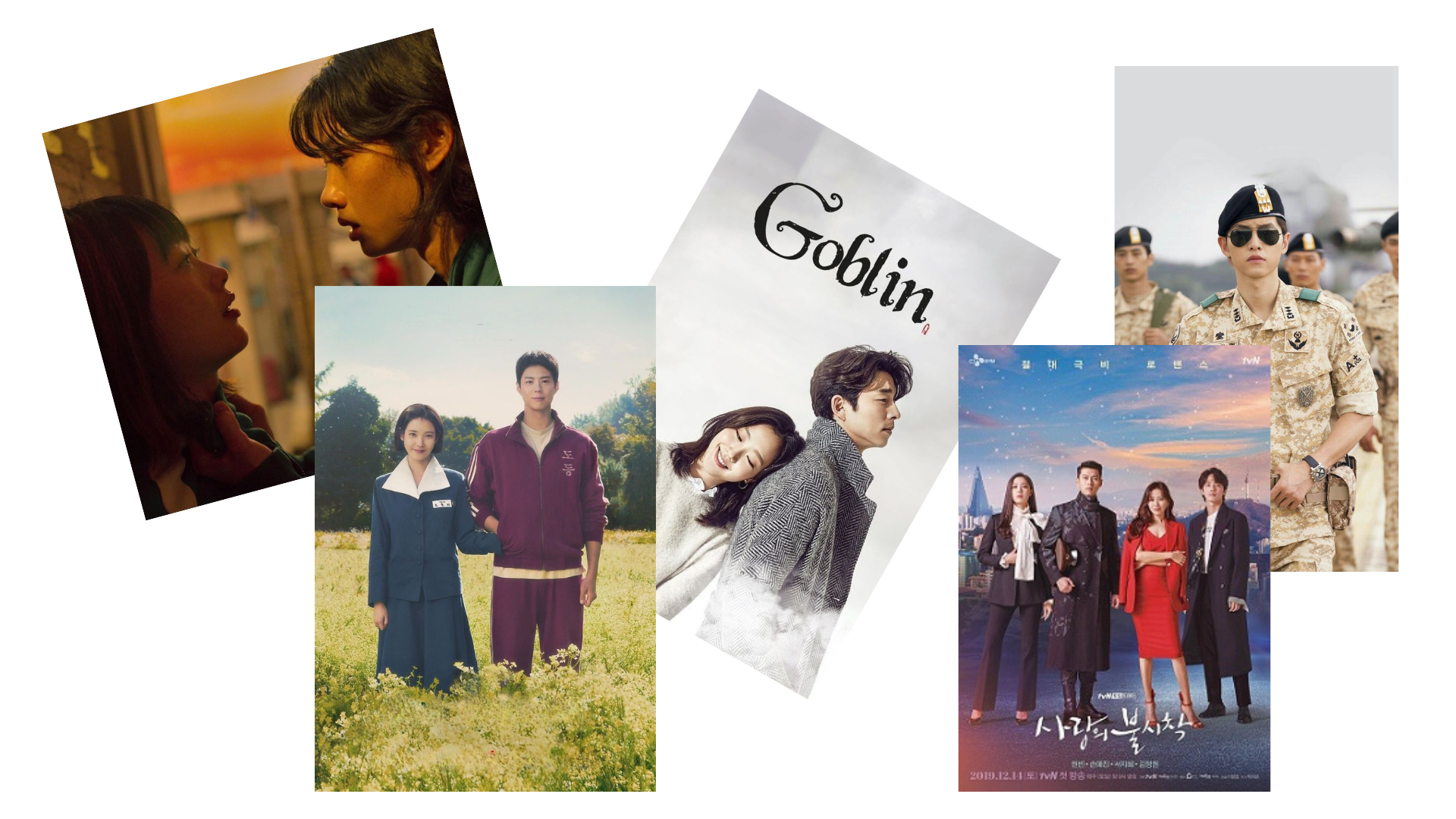Why Korean Dramas Win Hearts: A Deep Korean Drama Analysis of Character-Driven Storytelling vs Event-Driven Western TV
On a snowy night in Crash Landing on You (사랑의 불시착), South Korean heiress Yoon Se-ri sits across from North Korean officer Ri Jeong-hyeok. The glow from a single lamp paints their faces in warm gold as snow drifts silently outside. Their conversation drifts from teasing to moments heavy with unspoken longing. No explosions, no shocking twist — just two people talking, and somehow the whole world feels suspended. It’s the kind of K-drama emotional depth that exemplifies why Korean drama analysis always comes back to relationships first.
In Goblin (Guardian: The Lonely and Great God), a centuries-old immortal and a high school girl sit together at a lonely bus stop. He offers quiet, almost fatherly advice about life. She responds with childlike sincerity, her breath curling in the cold night air. The camera lingers, refusing to cut away, letting the stillness deepen until you feel you’re intruding on something sacred. This is character-driven storytelling at its finest.
Even in Squid Game — known globally for its brutal survival games — the most unforgettable moments are not the killings, but the intimate human exchanges that happen before them. In the “Gganbu” episode, Gi-hun and the old man Oh Il-nam sit in an alley in a recreated neighborhood:
Il-nam: “You know, you and I… we’re gganbu now.”
너랑 나… 이제 깐부잖아.
Gi-hun: “Gganbu?”
깐부요?
Il-nam: “It means we share everything. What’s mine is yours.”
깐부는 모든 걸 같이 하는 거야. 내 것도 니 거고, 니 것도 내 거고.
Later, Sae-byeok and Ji-yeong talk quietly in a shadowed corner:
Ji-yeong: “When we get out… what will you do?”
나가면… 뭐 할 거야?
Sae-byeok: “Take my mother out of the North. Get my brother from the orphanage. Live together.”
엄마 탈북 시키고… 고아원에 있는 동생 데려와서 같이 살 거야.
Ji-yeong: “That’s a nice dream.”
(pause)
Ji-yeong: “I don’t have anything like that. So… you win.”
나는 그런 거 없어. 그러니까… 니가 이겨.
This “K-drama tearjerker moment” is why Squid Game isn’t remembered only for its shocking events, but for the emotional layers that define K-drama cultural impact worldwide.
---
When Life Gives You Tangerines: The Essence of People-First Drama
The recent hit When Life Gives You Tangerines (폭싹 속았수다) may not have the flashy premise of The West Wing or the mob intrigue of The Sopranos, but it is the epitome of Korean drama relationships. Set in Jeju Island over decades, it focuses on life’s crossroads rather than cliffhangers. School or work, leave or stay — the drama asks: who do you choose to walk beside you?
The early episodes brim with casual, teasing exchanges between Esun and Gwang-sik, wrapped in the island’s slow rhythm. Then comes a moment that seals their connection:
Gwang-sik: “You always choose the harder road.”
Esun: “Better than one without you.”
Gwang-sik: “Then I’ll walk it with you.”
These are the kinds of K-drama emotional depth beats that global fans find irresistible — understated yet unforgettable.
---
Character-Driven Storytelling vs Event-Driven Storytelling
Many U.S. dramas, while capable of tenderness (Friday Night Lights, The Leftovers), are often powered by event-driven storytelling. Shows like The West Wing are built around crises — budget showdowns, diplomatic standoffs — and The Sopranos uses therapy sessions as narrative fuel for the next mob maneuver.
A line from The West Wing sticks with viewers:
“Decisions are made by those who show up.”
It’s stirring, but it belongs to the machinery of plot. In contrast, K-drama human connection moments often hinge on a shared meal, a late-night walk, or a whispered promise. These scenes might seem uneventful, but they’re the reason K-drama global popularity has surged — they leave the audience with people, not just plot points.
---
The Cultural Layer: Why K-Dramas Are Popular
A crucial element in K-drama cultural impact is the Korean language itself. Phrases like 미안합니다 (formal “I’m sorry”) and 죄송합니다 carry nuanced layers of sincerity and hierarchy that deepen every reconciliation scene. Even simple questions like “밥 먹었어?” (“Have you eaten?”) double as expressions of care.
Unlike the often rapid-cut pacing of Western series like Breaking Bad or House of Cards, Korean drama tearjerker moments breathe. Directors let the silence after a confession hang in the air; editors allow viewers to sit with the aftermath of a smile or a sigh. This slower pacing gives K-drama emotional depth room to bloom.
---
The Global Appeal of Korean Drama Relationships
Why do global fans of K-dramas binge-watch 16-hour series built on small moments? Because K-drama human connection offers an emotional payoff different from the adrenaline of plot twists. In When Life Gives You Tangerines, a shared tangerine can carry as much weight as an election night in The West Wing. In Crash Landing on You, a quiet promise in the demilitarized zone resonates more than any shootout.
Even in Goblin, a seemingly supernatural battle is less about victory and more about whether two lonely souls can find warmth together.
---
Conclusion: People Over Plot
Korean drama analysis consistently reveals one truth: character-driven storytelling leaves a different imprint than event-driven storytelling. Western dramas excel at velocity and tension; Korean dramas excel at resonance and aftertaste. One is the escalator, the other the staircase — both get you there, but only one lets you carry something home.
And in the best K-dramas, that “something” is always a person.
